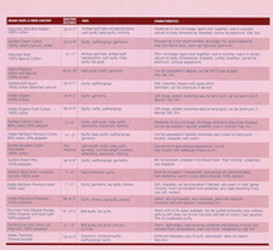How to Choose Batting: Part 2
Posted by Harriet Hargrave on Dec 7th 2015
Welcome to part two of the How to Choose Batting guide, from Harriet Hargrave!
Batting Checklist
When deciding on an appropriate batt for a quilt top, ask yourself:
- Do I want the quilt to be thick or thin?
- Do I want the quilt to look flat or fluffy?
- Do I want to hand or machine quilt it?
- Do I like to quilt? How close do I want to quilt this top?
- Do I need this quilt for warmth? Is it for summer, spring, fall, or winter temperatures?
- Is the finished quilt going to be washed a lot, or is it just for show?
- Did I prewash my fabrics or not? Do I want shrinkage to give me an "older" look? Do I want the quilt to look antique or contemporary?
- Is the quilt going to hang on the wall or lay on a bed?
- Do l want a natural, synthetic, or blended fiber batt?
- Make batting samples, then ask: Is one sample too wrinkled and another too flat? Check for bearding problems. Check if tiny fibers are migrating through the surface of the quilt. Does the color shadow through the batting distort the top color?
Quilting Distance
![]() Manufacturer's claim their brands can be quilted up to 10"
apart. Be aware of a basic problem with this claim. What is suggested is the batting will not fall apart if quilted up to 10" apart. But the weight and wear and tear on the limited number of quilting stitches (expected to hold everything together) is not addressed. When a quilt is quilted farther apart than 3", there are not enough quilting lines to support the weight. This results in broken stitches and quilts that wear quickly and look worn in a short time. Please keep your quilting
lines no farther apart than 3". If you look at the beautiful antique quilts (up to 150 years old), you'll notice that they are heavily quilted. With good batting choices and adequate quilting, your quilts will look lovely for a long, long time.
Manufacturer's claim their brands can be quilted up to 10"
apart. Be aware of a basic problem with this claim. What is suggested is the batting will not fall apart if quilted up to 10" apart. But the weight and wear and tear on the limited number of quilting stitches (expected to hold everything together) is not addressed. When a quilt is quilted farther apart than 3", there are not enough quilting lines to support the weight. This results in broken stitches and quilts that wear quickly and look worn in a short time. Please keep your quilting
lines no farther apart than 3". If you look at the beautiful antique quilts (up to 150 years old), you'll notice that they are heavily quilted. With good batting choices and adequate quilting, your quilts will look lovely for a long, long time.








